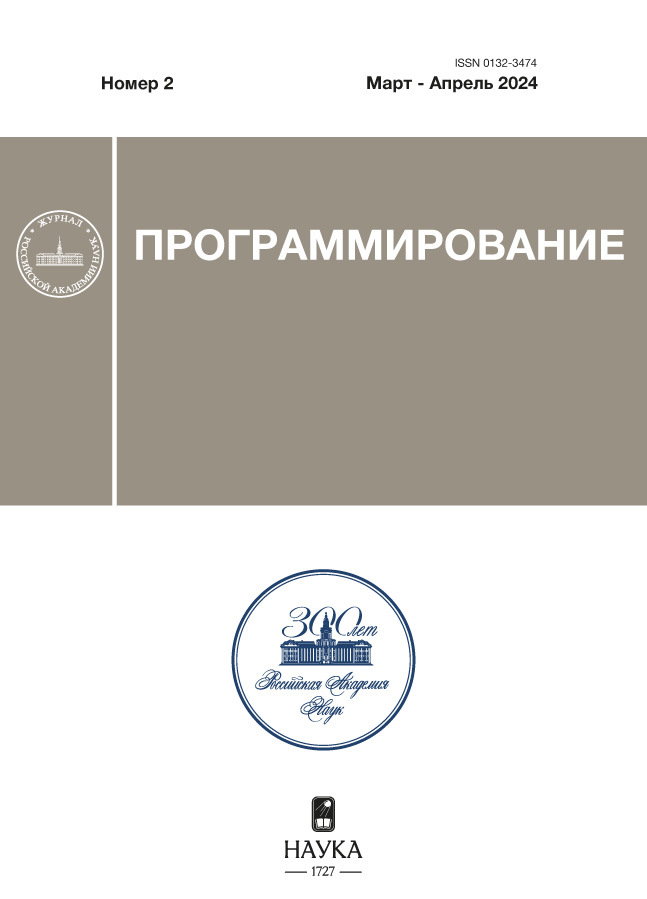Computer-algebraic approach to first differential approximation: Van der Pol oscillator
- Autores: Blinkov Y.A.1
-
Afiliações:
- Saratov State National Research University, ul. Astrakhanskaya 83
- Edição: Nº 2 (2024)
- Páginas: 7-12
- Seção: КОМПЬЮТЕРНАЯ АЛГЕБРА
- URL: https://rjeid.com/0132-3474/article/view/675699
- DOI: https://doi.org/10.31857/S0132347424020022
- EDN: https://elibrary.ru/RPFLEU
- ID: 675699
Citar
Texto integral
Resumo
First differential approximation has been used to analyze various numerical methods for solving systems of ordinary differential equations. This has made it possible to estimate the stiffness of the ODE system that models the oscillations of the Van der Pol oscillator and the error of the method as well as to propose simple criteria for choosing a calculation step. The presented methods allow one to perform efficient calculations using computer algebra systems.
Texto integral
Sobre autores
Yu. Blinkov
Saratov State National Research University, ul. Astrakhanskaya 83
Autor responsável pela correspondência
Email: blinkovua@info.sgu.ru
Rússia, Saratov, 410012
Bibliografia
- Yanenko N.N., Shokin Yu.I. On the first differential approximation of difference schemes for hyperbolic systems of equations, Sib. Mat. Zh., 1969. V. 10. No. 5. P. 1173–1187.
- Blinkov Yu.A., Gerdt V.P., Marinov K.B. Discretization of quasilinear evolution equations by computer algebra methods. Program. Comput. Software. 2017. V. 43. No. 2. P. 84–89.
- Blinkov Yu.A., Rebrina A.Yu. Investigation of difference schemes for two-dimensional Navier–Stokes equations by using computer algebra algorithms, Program. Comput. Software, 2023. V. 49. No. 1. P. 26–31.
- Blinkova A.Yu., Malykh M.D., evast’yanov L.A. On differential approximations of difference schemes, Izv. Sarat. Univ., Nov. Ser., Ser. Mat., Mekh., Inf. 2021. V. 21. No. 4. P. 472–488.
- Kutta M. Beitrag zur näherungsweisen Integration totaler Differentialgleichungen. Zeitschrift für Mathematik und Physik. 1901. V. 46. P. 435–453.
- Bashforth F. An Attempt to test the Theories of Capillary Action by comparing the theoretical and measured forms of drops of fluid. With an explanation of the method of integration employed in constructing the tables which give the theoretical forms of such drops, by J. C. Adams, Cambridge. 1883.
- Moulton F.R. New methods in exterior ballistics, University of Chicago Press. 1926.
- van der Pol B. On “Relaxation-Oscillations”. The London, Edinburgh, and Dublin Philosophical Magazine and Journal of Science. 1926. N. 2. P. 978–89992. doi: 10.1080/14786442608564127
- Kolchin E.R. Differential Algebra and Algebraic Groups. Academic Press, New York, 1973. 446 p.
- Buchberger B. Gröbner bases: an Buchberger algorithmic method in polynomial ideal theory. Recent Trends in Multidimensional System Theory / Ed. by N. K. Bose. V. 6. 1985. P. 184–232.
- Duffing G. Brzwungene Schwingungen bei veranderlicher Eigenfrequenz und ihre technische Bedeutung, Braunschweig, 1918.
- Curtiss C.F., Hirschfelder J.О. Integration of stiff equations. Proceedings of the National Academy of Sciences of the USA. 1952. V. 38. N. 3. P. 235–243. doi: 10.1073/pnas.38.3.235
- Crank J., Nicolson P. A practical method for numerical evaluation of solutions of partial differential equations of the heat conduction type. Proc. Camb. Phil. Soc. 1947. V. 43. N. 1. P. 50–67. doi: 10.1017/S0305004100023197
- Dorman J.R., Prince P.J. A family of embedded Runge–Kutta formulae. Journal of Computational and Applied Mathematics. 1980. V. 6. N. 1. P. 19–26. doi: 10.1016/0771-050X(80)90013-3
Arquivos suplementares

















